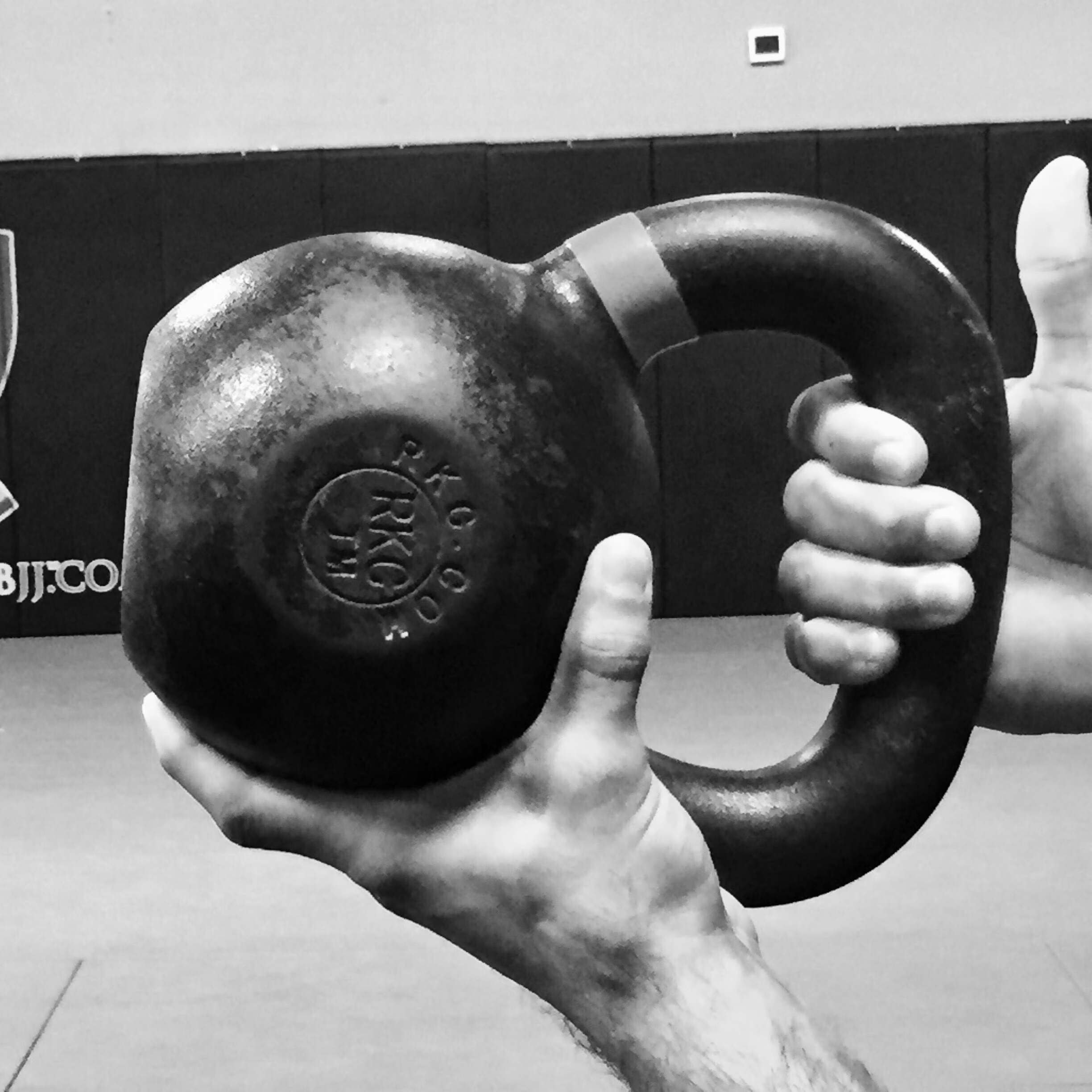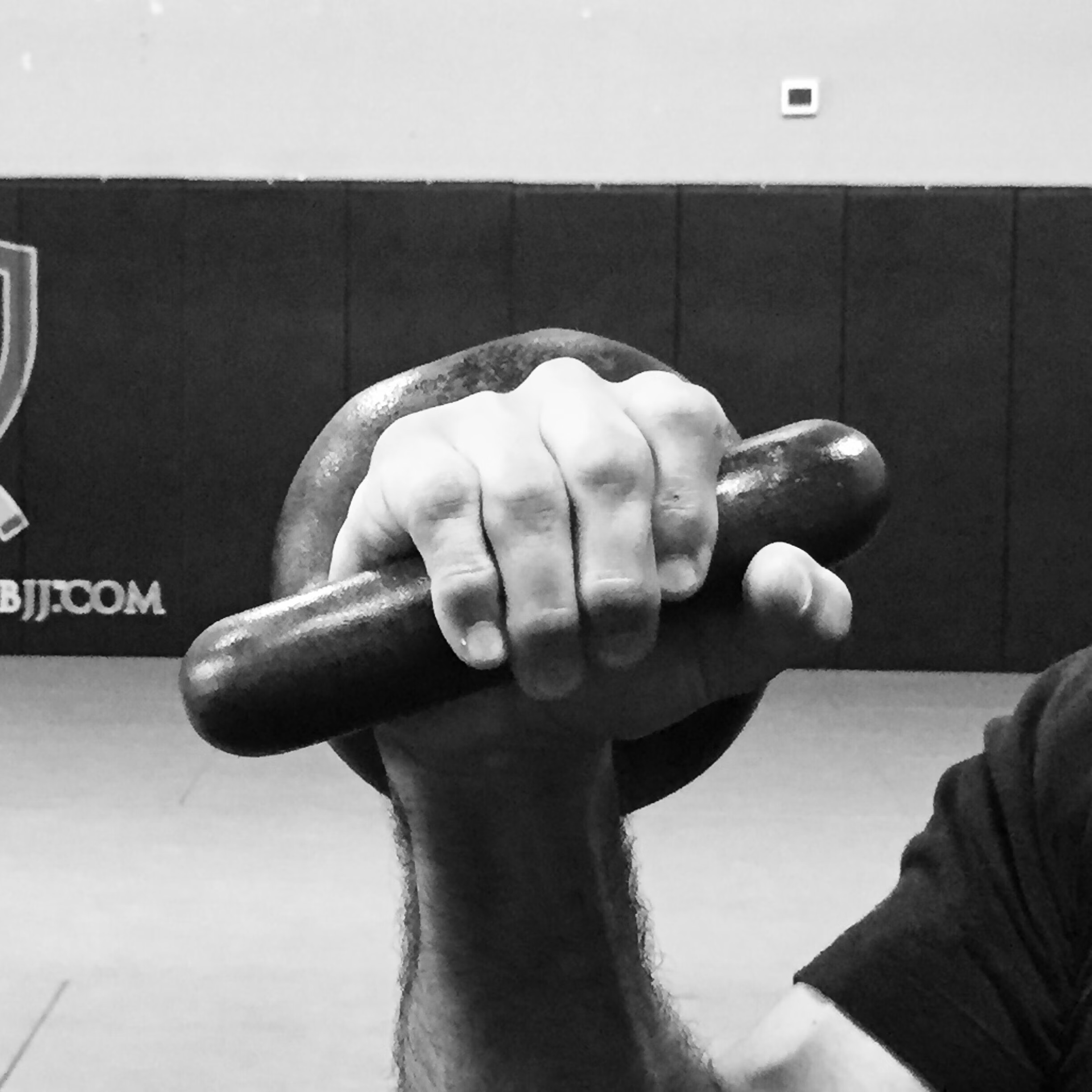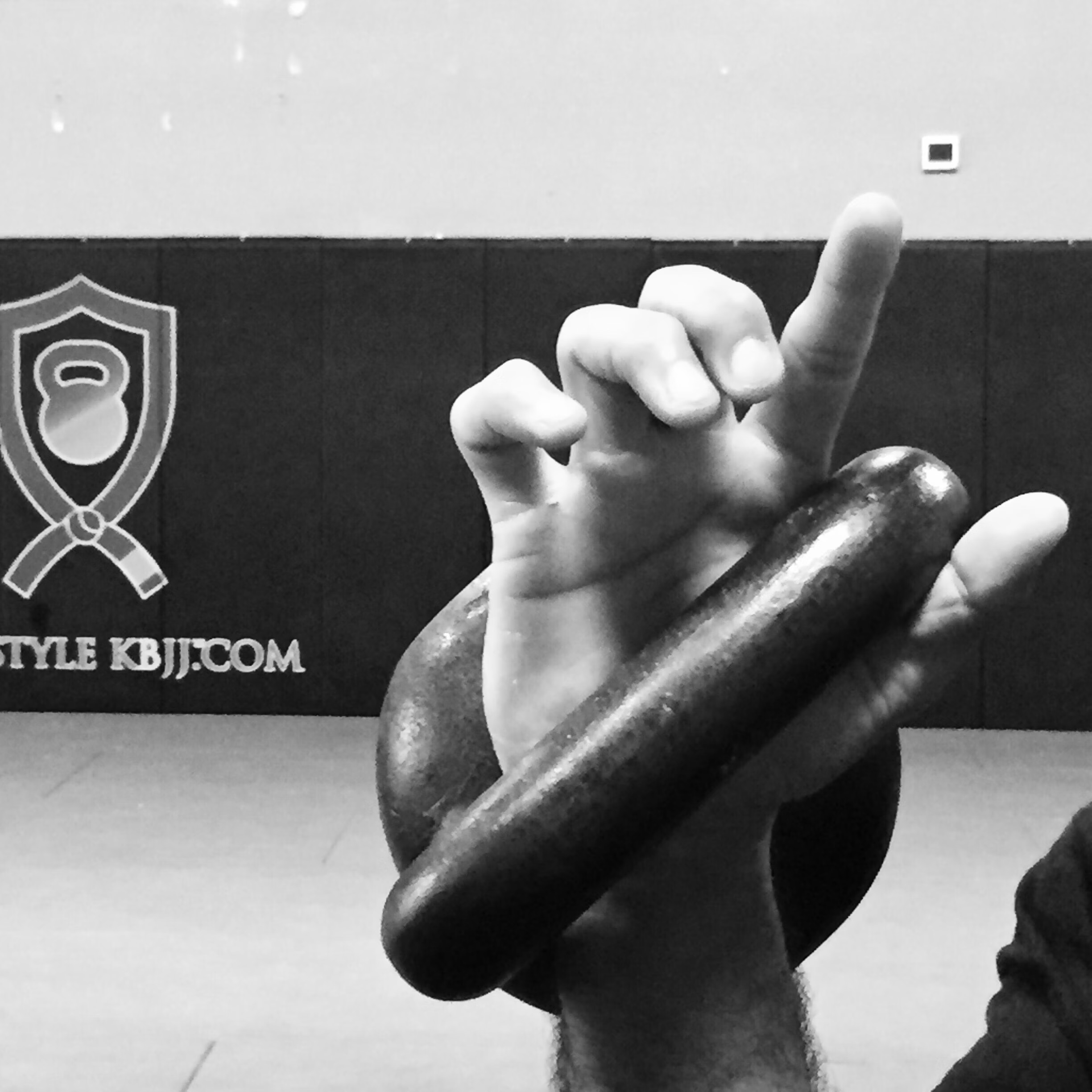Kettlebell Beginner’s Guide: How to Grip a Kettlebell Part 2
In today's post, we continue our Kettlebell Beginner’s Guide series with: How to Grip a Kettlebell Part 2. The moto within StrongFirst® is, "Strength is a skill, and that skill must be practiced."
Many people confuse this statement. I've heard people say, "No, the particular exercises are a skill in themselves, but strength itself is not a skill."
To that I say... HUH?! Here is what they don't understand.
First, let's define strength. Strength is simply the ability to produce force against an external resistance. Next, lets define "skill."
A skill is something that can in fact, "be practiced."
Like:
- Playing a musical instrument.
- Learning Jiu-Jitsu.
- Public speaking and...
- Strength training.
How do you get stronger?
By understanding how to deploy the professional application tension!
Knowing when and how to apply tension to execute the lift. And the most effective way to do this is through practice. For example, learning how to create tension in the glutes, abs, lats and your grip, helps increase your military press, deadlift and pull-up.
Now, creating the tension is the "easy" part. Mastering the application, knowing how to get comfortable with that tension and knowing how to turn it on and off...
THAT is A SKILL!
Ipso fact... STRENGTH IS A SKILL!
Today's post is focused on...
the 3 particular kettlebell grips
And when to use one over the other. Did you know each kettlebell exercise has it's own particular grip?
Yep.
And knowing how to switch from one grip to the next on the fly is an essential skill to master in order to make your training session more effective. One grip is universal whether you're swinging, snatching or cleaning a kettlebell.
The other two are particular.
One will help improve your grinds (I.e., Kettlebell Presses, Getups, and Front Squats). The other will improve your ballistics (I.e., Kettlebell Cleans, Snatches, and Jerks).
Kettlebell Beginner’s Guide: How to Grip a Kettlebell Part 2
Grip #1: Hook Grip

This is the first grip to master for your swings, cleans and snatches. I see too many hands with tears and calluses in the center of the palms which is unacceptable.
You can't avoid calluses and sometimes even tears. But, the calluses should be on the fingers and not the center of the palm. One of the main causes of over gripping the kettlebell (which leads to calluses on the palm) is a lack of either confidence or finger strength with the hook grip.
You will see this primarily with the Kettlebell Snatch.
In my experience the best (and safest) way to train the hook grip is a steady dose of farmer carries.
I'm more of an advocate of single arm carries than double kettlebell carries. For the purpose of symmetry. Plus, this will build a sold base of reflexive strength.
With single bell carries you get the best of both worlds, static and dynamic stability.
Grip #2: Crush Grip

This grip is crucial for a strong military press, front squat and getup.
With the crush grip you're able to get a full purchase on the bell. The more surface of the hand which makes contact with the handle (specific to grinds only) the stronger the lift will be.
The strength of your body, abs and shoulders are directly connected to the strength of your grip.
Improving your grip = GETTING STRONGER over all!
Not only that... during the crush grip, you're able to get a good squeeze with the thumb.
Pressure from your thumb travels to the long head of the bicep, which is responsible for shoulder flexion (getting the bell over-head for presses, snatches, etc...).
Grip #3: False Grip

This grip is common amongst elite gymnast which can also be applied to your kettlebell exercises. This grip is a complete contrast to the crush grip.
Your hand should be completely relaxed. The bottom corner of the palm and wrist are what locks this grip into place.
This grip is for high volume ballistics e.g., Push Presses, Jerks, and Snatches. Where the goal is as many reps possible. Or a certain amount of reps in a given time like the snatch test.
This is common in the sport of kettlebell lifting (i.e., Girevoy Sport aka: GS).
Mastering this grip is tricky. The goal is to hit this grip (which is a skill) on the fly with each clean. A couple of reasons this is a powerful grip for your ballistic lifts:
- It uses less energy and preserves your grip.
- The nature of the placement on the corner of the palm and wrist. There is a nerve (I like to think of it as a power switch) that innervates (triggers) the tricep muscle to fire aiding in a quicker and stronger lockout.
Master these 3 particular grips when using your kettlebells will not only build a more capable body. They will save you from progress-destroying hand tears.
Which keep you from practicing on a consistent basis.
The better and stronger your grip is, the better and stronger your technique will be.
The stronger your technique, the more weight you can lift, the more weight you can lift, the stronger and leaner you come.
This is why we say... strength is a skill.
Appreciate you reading,
hec "the kettlebell coach" g.

[…] 3 of the reasons I'll be sharing are important BUT — this one is the MOST common. Over gripping [the damn bell]. This has a cascading effect on the rest of your technical skills and will choke the life out of […]